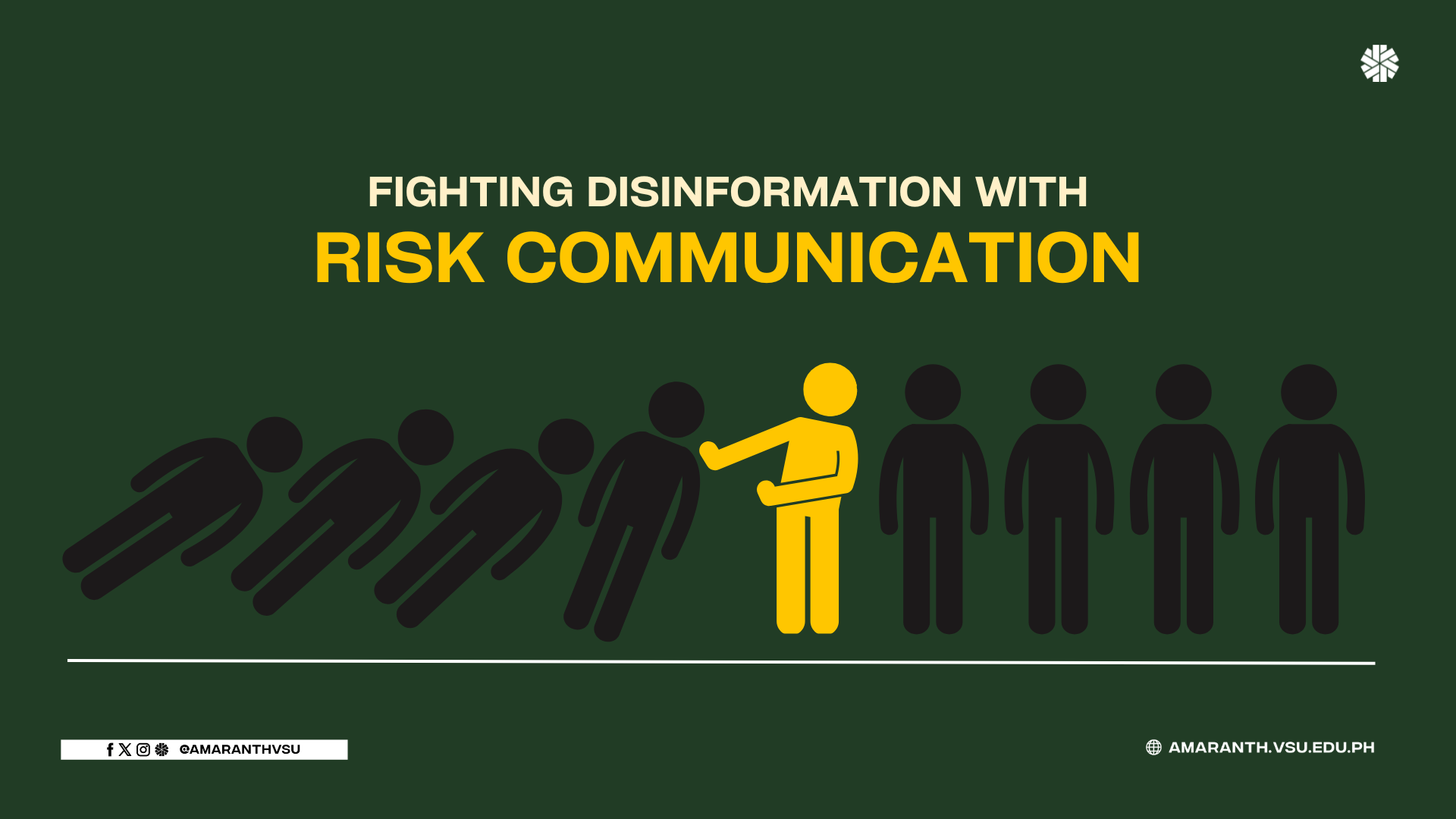In 2019, Visayas State University Main Campus experienced an unprecedented bomb threat attack that was later ruled out to be a fake intel. No bombs were found in the campus premises after a 2-day search. More recently, this year, a fire broke out in a smart classroom being built near the upper campus dormitories. It was during these emergency situations that revealed some of the gaps in the disaster preparedness of universities like ours.
Despite having experienced constant drills since elementary in cases of fire or earthquake, it's clear that theoretical knowledge doesn't always translate into effective action during real emergencies. Oftentimes, the distress and panic caused by a disaster is further fueled by exaggerated and wrong information spreading from person to person, and in social media.
In a world full of uncertainties, it’s essential to be equipped with the right kind of disaster preparedness knowledge. This goes beyond just knowing the basics, like how to put out a fire or avoid harm during an earthquake, but also fighting disinformation to protect people from unnecessary panic and stress. That’s where Risk Communication, or RiskComm, comes in.
What is Risk?
The idea of risk revolves on the possibility of a catastrophic event to cause harm to any individual. That is what we are trying to avoid, having more people getting hurt. Risk communication or RiskComm enables individuals to make decisions that will allow them to change or modify their behaviors toward risks before, during, and after a disaster. And it all starts with how we perceive risk.
The amount of risk we perceive towards an event varies based on several factors such as emotional engagement, trustworthiness, and familiarity with the risk. This is true to many people who perceive the tenacity of a risk based on the level of emotional engagement such as fear, anger, and outrage. Oftentimes, if something happening doesn’t evoke strong emotions, we might not take it as seriously.
Take Supertyphoon Yolanda, for example, which caused thousands of deaths and left many missing. People underestimated its risk because they perceived it to be just another storm, similar to previous typhoons. This issue continues to be a problem since even during that time, a lot of people are not even familiar with the term “storm surge.”
That is why we need Risk Comm. It involves communicating crucial information during the preparedness, response, and recovery phases of a disaster, allowing people to make informed decisions and change their behavior for the better. The main idea here is to educate people on what to do during emergencies to reduce harm to themselves or to others.
In RiskComm, trust is the currency of a transaction. When people trust the giver of information, the more likely they become aware and change their behavior. This is why each one of us must develop the right skills in responding to disasters to the point that people will want to trust us. And how can we do that?
Building trust starts with expertise—knowing what you're talking about. It takes the right proper knowledge in order to communicate a crisis. The main challenge here is how to deliver 'bad news' to people without starting a panic. This is particularly essential especially in social media, where people tend to interpret and share sensationalized and exaggerated news about certain disasters that causes panic among people. Remember when there was news circulating earlier in July that there is a Super Typhoon named “Lakas” that is said to be stronger than Yolanda? That was fake news! Being a trusted source means knowing to trust your own sources first.
Moreover, successful risk communication during emergencies heavily depends on public trust in government agencies. People need to listen and follow instructions from authorities, whether it’s about evacuating or adhering to safety protocols. Emergency volunteers and personnel are trained to save lives, so its best to give them your trust rather than relying solely on what you read from social media.
Lastly, as we enter the last quarter of the year – the season that brings almost 70% of the typhoons that enter the country, it's important to have the right knowledge to combat not just the anticipated disasters, but also the wave of disinformation that comes with it. We are not just vulnerable in the actual field, we’re also susceptible to stress and panic, or risk in general, even in social media. As they always say: Ligtas ang may alam!


